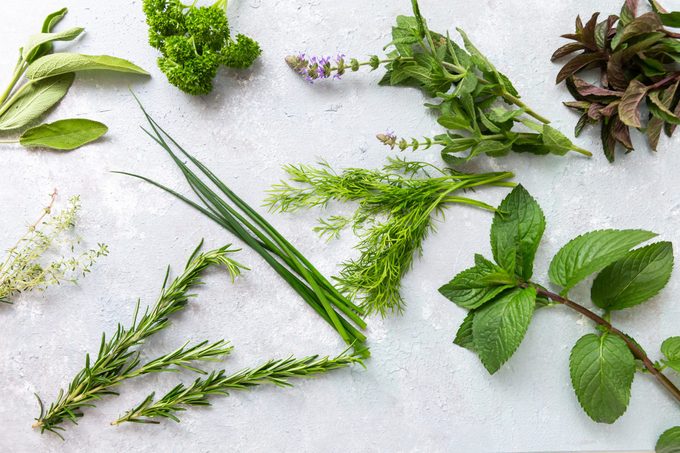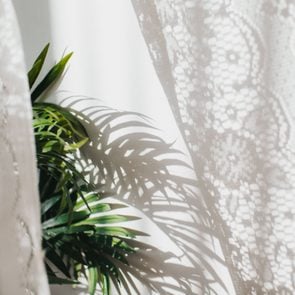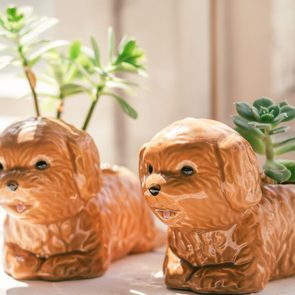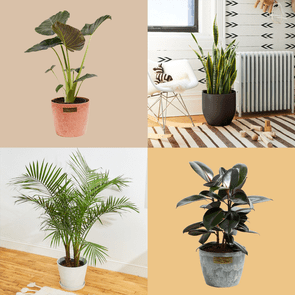Everything You Need to Know About Growing Herbs Indoors
Updated: Feb. 01, 2023

Light-loving herbs and a sunny sill make for a flourishing indoor herb garden
Nothing beats the taste of freshly cut herbs in a from-scratch meal. And whether you’re growing them for their flavor, fragrance or medicinal purposes, cultivating herbs as indoor plants is inexpensive and pretty straightforward. The key to dodging dead plants is picking the right species for your indoor herb garden and providing plenty of light (herbs aren’t a good choice if you’re looking for low-light indoor plants). These low-maintenance plants are often well-suited to a spot on a sun-soaked windowsill.
If you’re thinking about starting an indoor herb garden, read on for expert tips on how to bring about a bountiful harvest.
What you’ll need
Before you start the planting process, make sure you have all the supplies you’ll need to make your garden grow. The handful of supplies below will get the job done, but you can also buy an indoor herb garden kit, which simplifies the process.
- Herb seeds
- Containers with suitable drainage
- Well-draining potting mix
- Fertilizer
- Grow lamps (optional)
Where to put an herb garden
The first order of business is determining where to put your indoor herb garden. And that means you need to consider indoor plant lighting.
“The hardest thing about growing herbs indoors is having adequate light,” says professional herbalist and gardener Denise DeSpirito.
Plopping them on any old windowsill won’t cut it, especially if you want to continue to have a fresh supply of herbs during the winter. If your herbs aren’t getting enough sunlight, even if they don’t die, it can result in spindly growth and reduce the intensity of the flavor and aromas.
Most herbs need at least six hours of direct sunlight a day from a western- or southern-facing window. If you can’t provide this, grow lamps are the way to go. And don’t forget to rotate the plant regularly to promote even growth.
Temperature and humidity levels are other key considerations. “Group herbs to increase the humidity around plants. Our homes can be pretty dry in the winter,” says Donna Aufdenberg, a field specialist in horticulture at the University of Missouri Extension. But don’t clump them too close together! They still need adequate air circulation.
Locations beside drafty windows and heating or cooling vents are a no-no for indoor herb gardens. Most herbs appreciate daytime temperatures of at least 65 degrees.
If you have pets, choose a location that’s well out of reach of your four-legged friends, unless you plant only herbs that are nontoxic to pets. (For instance, basil is safe for pets, but chives are toxic to cats and dogs.) A vertical garden is a great option if you want to make the most out of your space.
Best types of pots for an herb garden
You’ve got your herbs set up in that sweet sunny spot, but they just aren’t thriving. What gives? You may not have them in the right pot. Soggy soil can lead to root rot if you don’t have adequate drainage holes in the container or if the plant sits in a saucer of water.
The material of your pot matters too. Mediterranean herbs, like rosemary and thyme, appreciate porous pots, like terra cotta. But for plants that like a bit more moisture, pick plastic or clay that won’t wick it away too quickly.
Pick deep pots for herbs with long taproots (like dill), and watch for the roots growing out of the drainage holes; that’s a sign it’s time for you to repot your plant. This is best done in the early spring, before peak growth begins.
Best types of soil for an herb garden
You want to avoid wet soils when growing an indoor herb garden. A well-drained soilless medium that mixes peat, vermiculite and perlite is often a good choice. If you’re looking for a more sustainable option, substitute the peat for coconut coir. A teaspoon of ground limestone helps avoid overly acidic soil, which most herbs aren’t fans of.
Some herbs can handle consistently moist soils, but most prefer that the soil dries out a bit before watering. Just watch out for wilting; that’s a sign your plant-watering schedule is off.
Best types of herbs to plant

“Not all herbs will grow well indoors,” Aufdenberg says. The best herbs for your indoor garden depend on the conditions you can offer them and whether you are moving them outside in the spring. But there are some dependably popular varieties worth considering.
- Basil. If you can offer at least six hours of direct sunlight, you can’t go wrong with this aromatic annual, an air-purifying plant that can help detoxify your home. DeSpirito recommends tulsi, an Indian basil. “The taste and smell of this one is truly magic and blends nicely with lemon verbena and makes a tea that helps the body adapt to stress.”
- Chives. “This is an easy starter plant for folks new to growing things,” DeSpirito says. It can even handle a partially shaded position.
- Mint. Aufdenberg and DeSpirito both recommend this medicinal plant, which conveniently grows in indirect light and evenly moist soil. “Fresh mint tea is delicious, so having a mint plant to pick some from is a treat,” DeSpirito says.
- Parsley. Another of Aufdenberg’s favorites, this needs a bright spot to thrive and even moisture. Humidity-loving parsley grows well alongside basil.
While rosemary is a common choice for indoor herb gardens, it won’t do well if you let the soil dry out completely. And it really thrives outside, which is why Aufdenberg doesn’t recommend it unless you move it outdoors when the warmer weather arrives. “I love rosemary and lavender, but they just can’t handle prolonged periods of time in the house. They start to really suffer after a couple of weeks,” she says. “I typically keep them under lights in my unheated garage, and they do well.”
When and how to harvest herbs
It’ll take some experience to get a feel for the optimal harvest point. If you harvest too early, the herbs won’t contain the peak amount of essential oils, and you won’t be able to take advantage of the best aromas and fragrances.
“Every plant is different in telling you when it’s ready to harvest. You need to consider the specific plant and its growth patterns to know when it’s time,” DeSpirito says. “Plants in the basil family [like tulsi] are great to learn from. You just pinch the stem above a set of two leaves, harvesting the top inch to two inches of the plant before it flowers.”
DeSpirito suggests harvesting before flowering, as this encourages the herb to branch and continue growing.
Some other harvesting tips to keep in mind:
- Don’t cut perennial herbs down more than half their height.
- Leave at least a few inches on the stem of annual herbs.
- Store fresh herbs in containers that promote air circulation. Sealed plastic bags lead to faster deterioration.
- Wash and pat down herbs immediately after harvesting.
- You can dry small-leaved herbs, like thyme, on the stem. But pick off the leaves of larger plants, like basil, before laying them out for drying.
- Don’t keep dried herbs for more than two to three years, as they start to lose their depth of flavor.
Tips for indoor herb gardens
- Go easy with watering. “Do not keep them overly wet or it will cause root rot. Watering once a week is typical for most home gardeners of indoor herbs, but due to differences in homes’ environmental conditions, that could vary somewhat,” Aufdenberg says.
- Fertilize in moderation. “Because we are watering regularly, we can wash out the nutrients from the soil over time, so it is important to replace them with a diluted fertilizer [whatever the recommendation is on the box or bag of fertilizer, cut it in half],” Aufdenberg says. Just don’t go overboard, as this can negatively affect flavors and fragrances.
- Be prepared to offer supplemental lighting. “A simple small fluorescent fixture, no more than 6 inches away, can make a difference in how the plants perform,” Aufdenberg says. “Let the lights shine for 14 to 16 hours a day.”
- Go slow when moving herbs outdoors. If you move your herbs to your yard in the summer, gradually acclimate them to the higher light over a couple of weeks. Start in a partial-shade position outdoors to avoid sun scorch, and watch out for insect infestations.
Sources:
- Denise DeSpirito, professional herbalist and gardener
- Donna Aufdenberg, field specialist in horticulture at the University of Missouri Extension






















